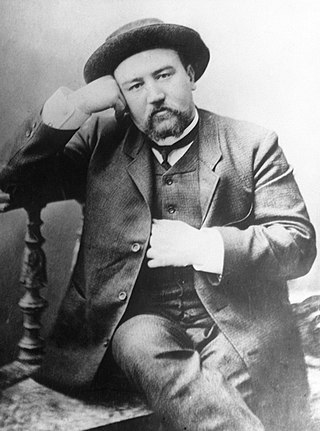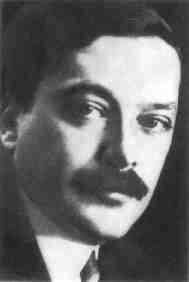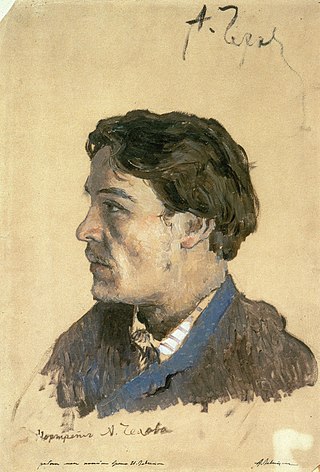
Russian literature refers to the literature of Russia, its émigrés, and to Russian-language literature. Major contributors to Russian literature, as well as English for instance, are authors of different ethnic origins, including bilingual writers, such as Kyrgyz novelist Chinghiz Aitmatov. At the same time, Russian-language literature does not include works by authors from the Russian Federation who write exclusively or primarily in the native languages of the indigenous non-Russian ethnic groups in Russia, thus the famous Dagestani poet Rasul Gamzatov is omitted.

Ivan Alekseyevich Bunin was the first Russian writer awarded the Nobel Prize in Literature in 1933. He was noted for the strict artistry with which he carried on the classical Russian traditions in the writing of prose and poetry. The texture of his poems and stories, sometimes referred to as "Bunin brocade", is considered to be one of the richest in the language.

Aleksandr Ivanovich Kuprin was a Russian writer best known for his novels The Duel (1905) and Yama: The Pit (1915), as well as Moloch (1896), Olesya (1898), "Captain Ribnikov" (1906), "Emerald" (1907), and The Garnet Bracelet (1911) – the latter made into a 1965 movie.

Mark Aldanov was a Russian and later French writer and critic, known for his historical novels.

Nina Nikolayevna Berberova was a Russian writer who chronicled the lives of anti-communist Russian refugees in Paris in her short stories and novels. She visited post-Soviet Russia. Her 1965 revision of the Constance Garnett translation of Leo Tolstoy's Anna Karenina with Leonard J. Kent is considered the best translation so far by the academic Zoja Pavlovskis-Petit.

Ivan Sergeyevich Shmelyov was a Russian writer best known for his full-blooded idyllic recreations of the pre-revolutionary past spent in the merchant district of Moscow. He was a member of the Moscow literary group Sreda. After the October Revolution Shmelyov fled to France, becoming an émigré writer.

Roman Borisovich Gul was a Russian émigré writer, his political position was leftist-liberal, he was critical towards the conservative, tsarist White Movement.

The Village is a short novel by the Nobel Prize-winning Russian author Ivan Bunin, written in 1909 and first published in 1910 by the Saint Petersburg magazine Sovremenny Mir under the title Novelet (Повесть). The Village caused much controversy at the time, though it was highly praised by Maxim Gorky, among others, and is now generally regarded as Bunin's first masterpiece. Composed of brief episodes set in its author's birthplace at the time of the 1905 Revolution, it tells the story of two peasant brothers, one a brute drunk, the other a gentler, more sympathetic character. Bunin's realistic portrayal of the country life jarred with the idealized picture of "unspoiled" peasants which was common for the mainstream Russian literature, and featured the characters deemed 'offensive' by many, which were "so far below the average in terms of intelligence as to be scarcely human."

The Life of Arseniev: Youth is an autobiographical novel by Nobel Prize-winning Russian author Ivan Bunin seen by many as his most important work written in emigration. It is Bunin's only full-length novel.
Dry Valley is a short novel by a Nobel Prize-winning Russian author Ivan Bunin, first published in the April 1912 issue of the Saint Petersburg Vestnik Evropy magazine. Having come out soon after The Village (1910), it is usually linked to the latter as the author's second major book concerning the bleak state of Russia as a whole and its rural community in particular. It is also regarded as the last in Bunin's early 1900s cycle of "gentry elegies". The novel was filmed in 2011, directed by Aleksandra Strelyanaya.

Mitya's Love is a short novel by the Nobel Prize-winning Russian author Ivan Bunin written in 1924 and first published in books XXIII and XXIV of the Sovremennye zapiski, a Paris-based literary journal in 1925. It also featured in a compilation of novelets and short stories published the same year in France.

Cursed Days is a book by Nobel Prize-winning Russian author Ivan Bunin, compiled of diaries and notes he made while in Moscow and Odessa in 1918-1920. Fragments from it were published in 1925-1926 by the Paris-based Vozrozhdenye newspaper. In its full version Cursed Days appeared in the Vol.X of The Complete Bunin (1936), compiled and published in Berlin by the Petropolis publishing house. In the USSR the book remained banned up until the late 1980s. Parts of it were included in the 1988 Moscow edition of The Complete Bunin. After the collapse of the Soviet Union, Cursed Days became immensely popular in its author's homeland. Since 1991, no less than fifteen separate editions of Bunin's diary/notebook have been published in Russia. The English translation, made by Bunin scholar Thomas Gaiton Marullo, was published in 1998 in the United States by Chicago-based Ivan R. Dee Publishers.

"Antonovka Apples" is a short story by Nobel Prize-winning Russian author Ivan Bunin, written in 1900 and published the same year in the October issue of the Saint Petersburg Zhiznh (Life) magazine, subtitled "Sketches from the Epitaph book".

Bird's Shadow is a collection of short stories by Nobel Prize-winning Russian author Ivan Bunin, inspired by the tour over the Middle East he and wife Vera Muromtseva undertook in the 1900s. Written between 1907 and 1911, these stories came out as a separate edition in Paris in 1931, although most of them had appeared in the Temple of the Sun 1917 compilation. The title refers to the Huma bird; Bunin writes of the view from the Galata Tower that he can see "the entire immense land... on which fell the 'shadow of the Huma Bird' ... the commenters on Saadi explain that this is a legendary bird and that its shadow brings to anyone on which it falls majesty and immortality"
Meliton is a novella by Nobel Prize-winning Russian author Ivan Bunin. Dated as "1900-1930" in The Complete Bunin, it was first published in the 1901 No.7 (July) issue of Saint Petersburg magazine Zhurnal Dlya Vsekh, originally under the title "Skete" (Скит). While working upon the Primal Love compilation, Bunin changed the story's title into "Meliton". In its final version the novella appeared in the July 6, 1930, No.3392 issue of the Paris-based Poslednye Novosti newspaper.

About Chekhov is a book of memoirs by Nobel Prize-winning Russian author Ivan Bunin, devoted to Anton Chekhov, his friend and major influence. Bunin started working on the book in the late 1940s in France. It remained unfinished, and was completed by the writer's widow Vera Muromtseva, and came out posthumously in New York City, in 1955. Translated by Thomas Gaiton Marullo, the book was published in English in 2007, under the title About Chekhov. The Unfinished Symphony.

Alexander Karasyov is a Russian writer living in St. Petersburg, Russia.

Don Aminado (1888–1957) was a Russian emigre writer. He was born Aminodav Shpolyansky into a Jewish family in Elizavetgrad in the Kherson Governorate of the old Russian empire. He studied law in Odessa and Kiev, and showed literary promise during his student years. In the decade of the 1910s, he published in various outlets such as Rannee Utro, Novy Satirikon and Krasnyi Smekh, dropping his Jewish name in favour of the pen name Don Aminado.
















